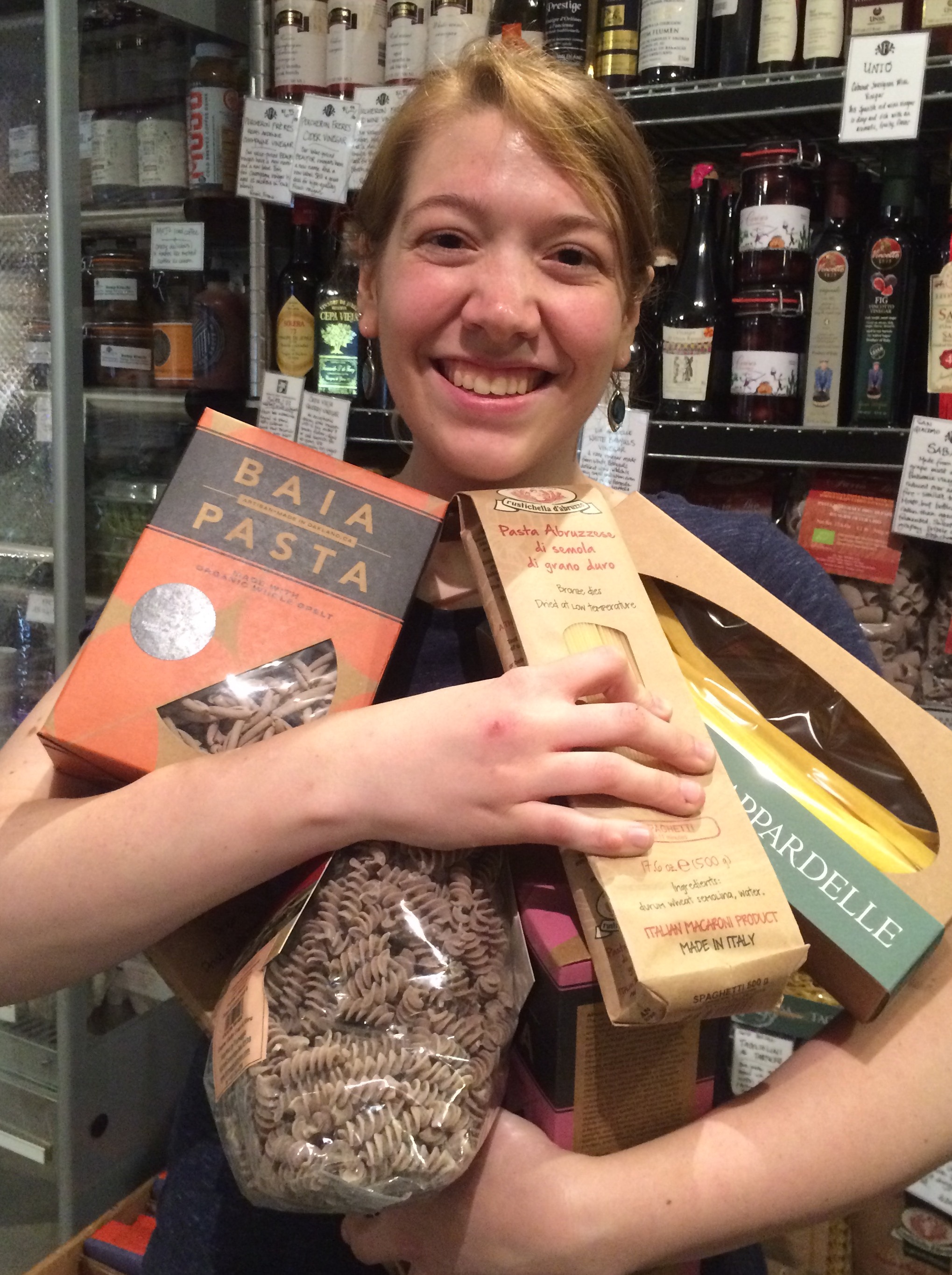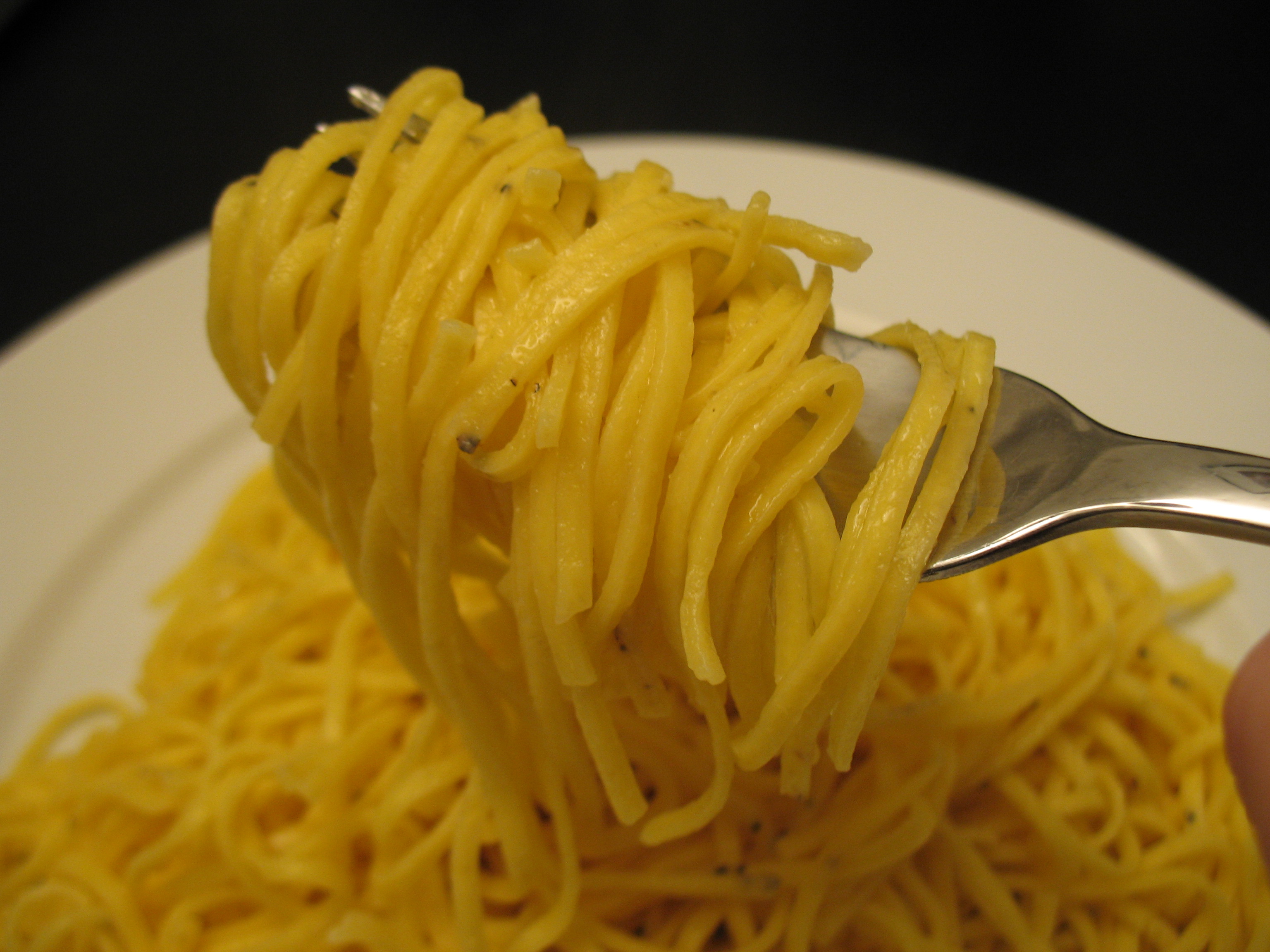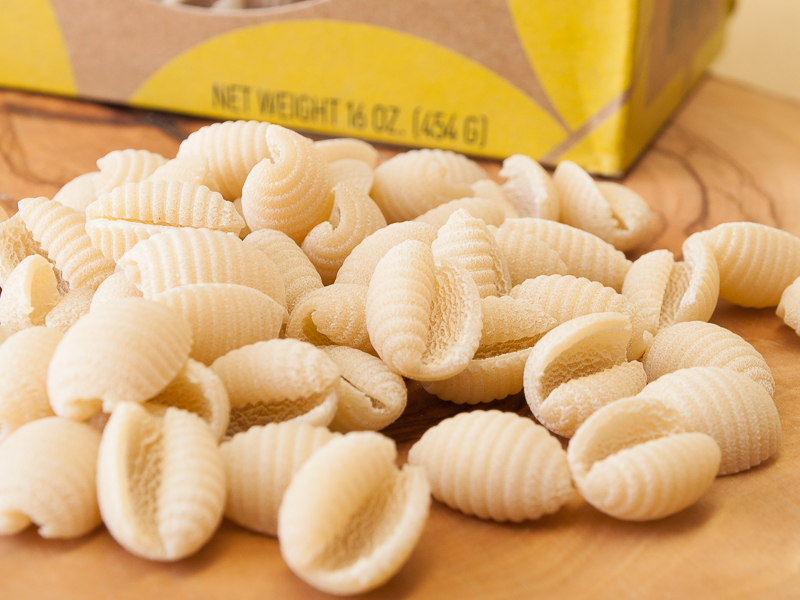These days, pasta comes in all shapes, styles, and sizes; ranging from traditional long strands of spaghetti to themed macaroni and cheese options. Formaggio Kitchen has a sizable selection of dried pastas, because each unique shape or style serves a function.
The wide variety of shapes and cuts we enjoy, stems from pasta’s long history. What we would consider modern pasta secca ('dried pasta') dates back to the 12th century and grew in popularity because it was easy to store and easy to cook. Many pasta cuts originated regionally and, often, many cuts were being produced in several regions but were known under separate names. Due to pasta’s widespread popularity and numerous producers, there are now over 300 shapes available today.

How to Pick a Pasta
When choosing which pasta is best suited to my meal, I consider function first and presentation second. A few of the questions I ask myself are: what proportion of the meal is the pasta, what length should it be, will it hold up under the weight of my other food, and how will my sauce stick to it? Once I’ve answered these questions, then I can consider the presentation of my pasta; is there a prettier or more fun shape that will get the job done and look awesome on my plate?
So what functions do the different shapes serve? Which ones will best suit your dining needs?
Sheet Pasta
Sheet pasta is pretty self-explanatory. The large, flat sheets are essential for separating layers of meaty sauce and cheese in a lasagna. In fact, the name lasagna comes from the latin word “lasanum,' (which means 'pot'), so the dish's instructions are practically there in the name - throw some layers together in a casserole dish and make yourself some dinner.

Tajarin, a traditional Langhe pasta
Long Pasta
Long pastas typically become the focus of a meal, taking up the largest portion of the plate; all other toppings are typically added in smaller ratios to compliment the selected pasta. I find long pasta great for sauce-based dishes or dishes that include strips of vegetables and other complementary additions that twirl easily around one’s fork. Possibly the most recognizable long pasta is spaghetti, well-known for the common pairing with tomato sauce and meatballs, but that’s not the only reason it’s so popular. Spaghetti’s popularity comes from its versatility as a sturdy, medium-sized pasta; strong enough to hold up to heavy or chunky sauces, but light enough to enjoy on its own.
The two most significant aspects of long pasta to consider when making your selection are width and thickness. The wider a pasta, the more surface area it has for sauces to latch onto, which is why heavy sauces, like Alfredo, are frequently paired with fettuccine. The more narrow and thin a pasta, the more delicate it becomes. Rather than drown capellini (or ‘angel hair’ as it’s more commonly known) in a thick, cream-based sauce, a light coating of butter or oil are preferred to dress one’s pasta.
My favorite long pasta dish is a fresh basil pesto mixed with seasonal vegetables on linguine ('little tongues'). Like almost any sauce, pesto could go on any pasta, but I prefer linguine because there are no places for the basil, garlic, and EVOO to clump together. With linguine, pesto evenly coats the pasta and sticks to sufficient surface area. I prefer Rustichella d’Abruzzo's linguine because it gives me the full experience of a traditional dried Italian pasta while meeting my personal budget constraints.

Gnocchetti, made to look like potato gnocchi
Short Pasta
In contrast to the uses of long pastas, short pastas including shapes and tubes are great in dishes when the pasta exists in equal measure to the rest of the dish; these are the kinds of meals where every bite has a bit of everything, where everything gets tossed together and nothing takes precedence over anything else. Soups, salads, casseroles; short and shaped pastas come in so many varieties, they can be used for just about anything.
Because the variety of short cut pastas is wide, it becomes easier to question on an individual basis which pasta is right for your dish. You may consider the uses for tortiglioni completely separate from the uses for penne, though both are short-cut, tubular pastas with ridges. You might prefer farfalle (‘bow ties’ or 'butterflies') over orecchiette (‘little ears’) in your pasta salad because you don’t like how cheese crumbles get stuck in the pockets of orecchiette. Maybe you do want the toppings to get trapped in a pocket and have a flavor explosion when you bite down. Choosing a short pasta is like finding the puzzle piece with the correct fit, you have to consider how it will interact with the big picture, so consider those shapes carefully.
I like a short cut pasta dish that packs a punch. I like the cheese in my Mac & Cheese to sink into the holes of my pasta and ooze through it with diced vegetables stuck to the pasta with all that melty goodness. I like my pasta salads to have a bit of everything in every bite. Which is perhaps why I like Gioie di Fattoria Conchiglie Pasta di Farro; the wide and short tube allows toppings to fall in, the twist keeps it trapped there, and the exterior ridges give the sauce something to cling onto. And I particularly enjoy the farro pasta for its hearty flavor in addition to the texture it brings to every dish.
Make your Pick
Having so many options can be overwhelming and even confusing if you’re not certain what attributes best suit your needs. It helps to consider the type of the sauce when selecting a pasta shape. Chunky or hearty sauces pair well with short tubes and shapes, and long strands pair nicely with smooth sauces.
The great thing about pasta is that there is no such thing as a wrong choice. Not everyone prefers their meals the same way, so as long as you are happy with how the pasta and its toppings mix together, it’ll be delicious!
Hayley Glossbrenner is a cheesemonger at Formaggio Kitchen South End.

